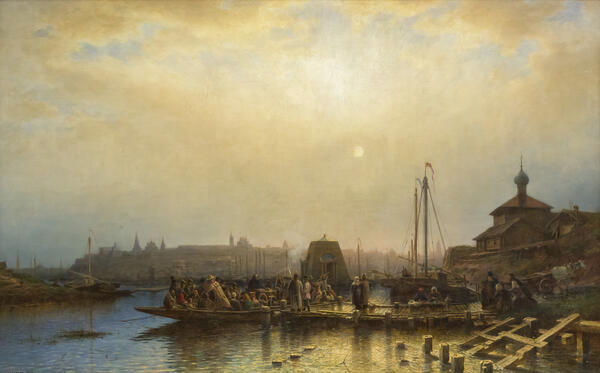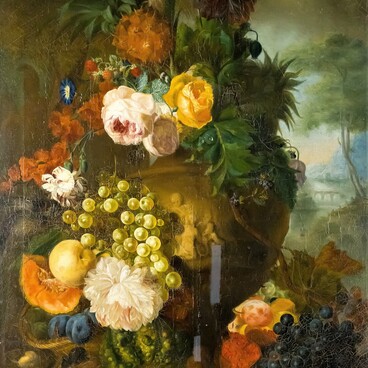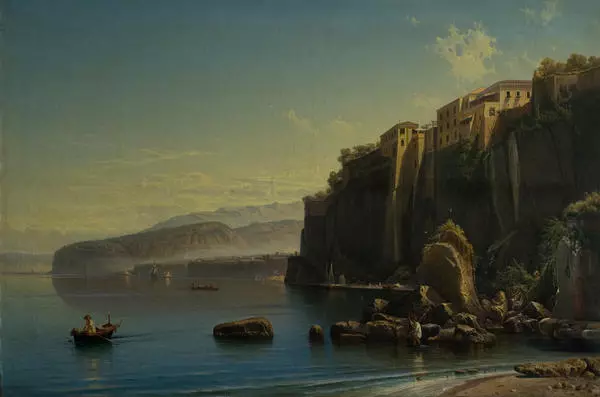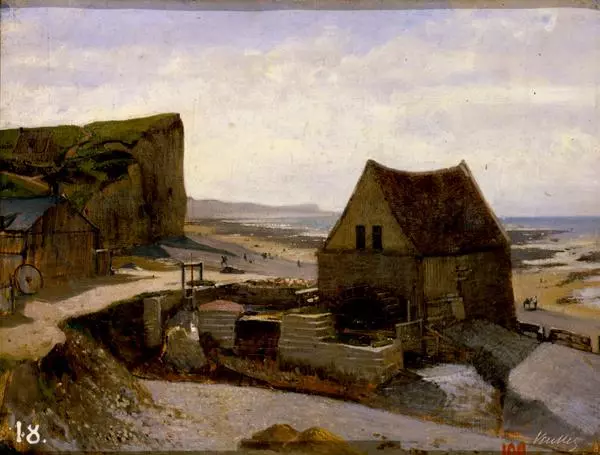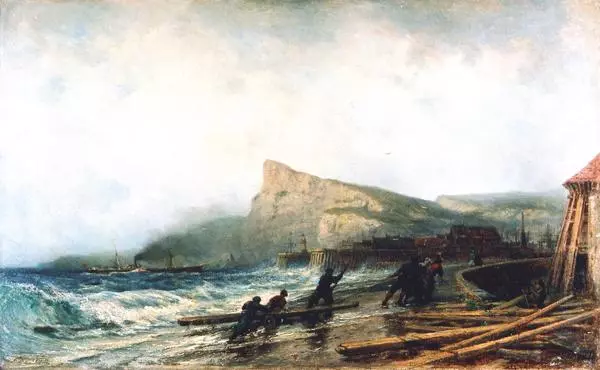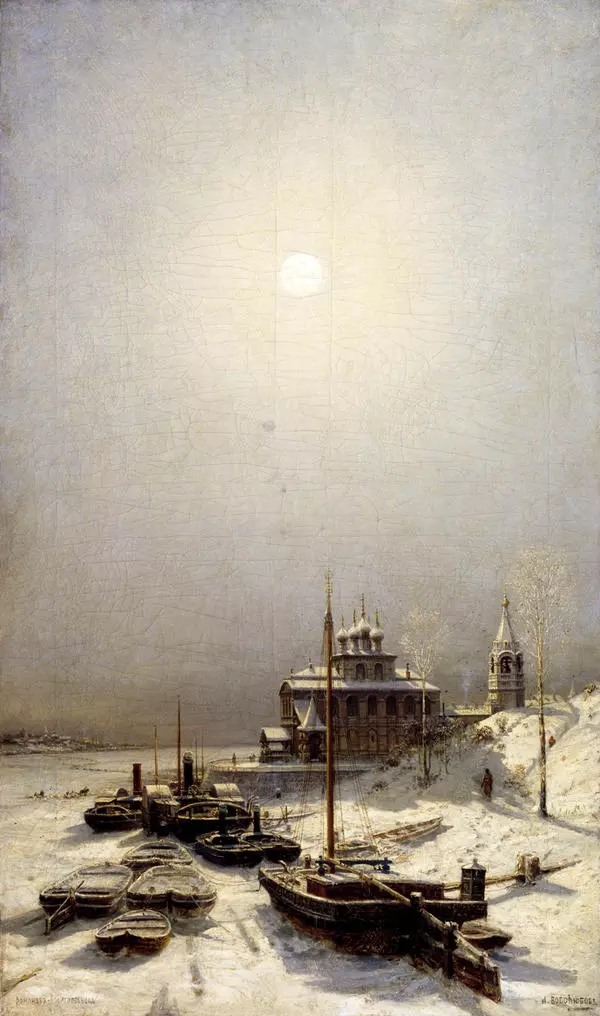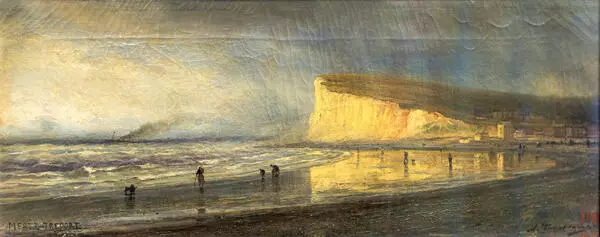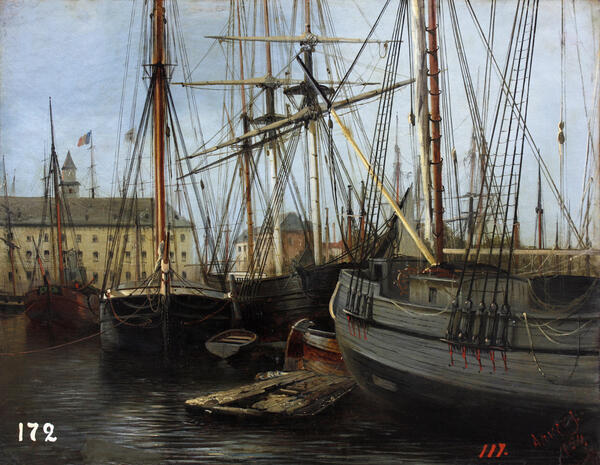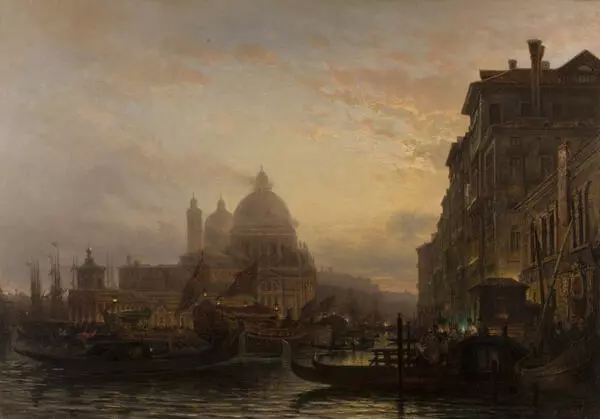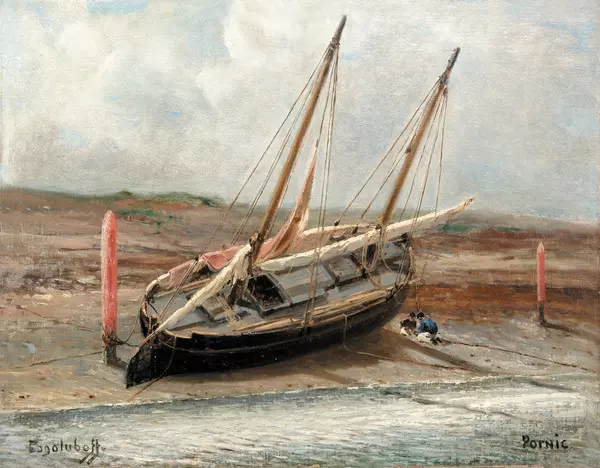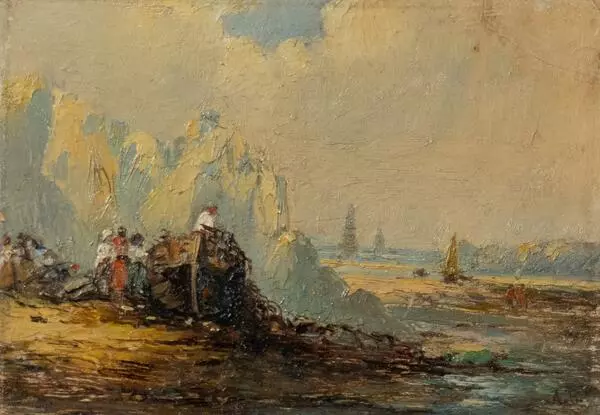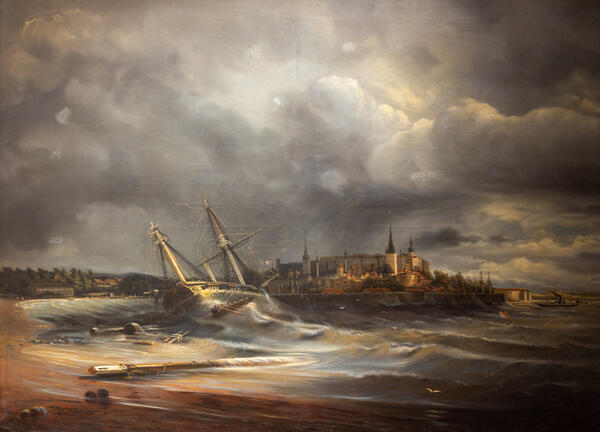‘Kazan’ was painted by Alexey Bogolyubov in 1862. The artist depicted the city of Kazan from the side of the Kazanka river — the left tributary of the Volga. Bogolyubov paid great attention to such details as the city walls with steeples and towers, the wooden domed church, and the wet pier boards. Closer to the center of the canvas, the viewers can see one of the architectural symbols of the city — a memorial church dedicated to the soldiers fallen during the Siege of Kazan on October 2, 1552.
The city is pictured as a big trading hub — the harbor is filled with ships. Apparently, Bogolyubov depicted the annual Kazan fair, which usually took place from May to June, when snow melting caused the Volga to break its banks: during that period, the ships loaded with goods could easily approach the city.
There is an entry about ‘Kazan’ in the ‘Notes of a Sailor-Artist’ — Alexey Bogolyubov’s memoirs. In them, he vividly described various stories about how he created his paintings. The artist wrote that once he and his brother were offered to sail on board a ship along the Volga from Tver to Astrakhan. On this journey, they needed to compile a guide: Bogolyubov’s brother took it upon himself to write the descriptions, and Bogolyubov — to make the illustrations. He wrote:
The city is pictured as a big trading hub — the harbor is filled with ships. Apparently, Bogolyubov depicted the annual Kazan fair, which usually took place from May to June, when snow melting caused the Volga to break its banks: during that period, the ships loaded with goods could easily approach the city.
There is an entry about ‘Kazan’ in the ‘Notes of a Sailor-Artist’ — Alexey Bogolyubov’s memoirs. In them, he vividly described various stories about how he created his paintings. The artist wrote that once he and his brother were offered to sail on board a ship along the Volga from Tver to Astrakhan. On this journey, they needed to compile a guide: Bogolyubov’s brother took it upon himself to write the descriptions, and Bogolyubov — to make the illustrations. He wrote:

